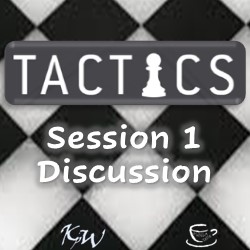23V22 – God and the Problem of Evil (Book Review)
(written by Dr. Kip Wehrman 08/01/2023)
Hello my friends. Thanks for joining me today for an @ the PUNLA coffee table. I would like to share with you a book I read by Chad Meister and James Dew Jr. “God and the Problem of Evil: Five Views”. I to share this with you as a potential resource that at least some of you might be interested in.
Let’s Pray.
Introduction
God and the Problem of Evil: five views by Chad Meister and James Dew Jr. begins with “Evil abounds.” No matter where or when we look we find pain and suffering. We find evil. The problem of those who believe in a God who is perfect good and loving and all-powerful and infinitely smart. So, if God is so loving, then why is the world full of pain and suffering. This is in consistent, so that if evil exist, how can God exist. To evaluate this, we must separate evil into two categories: moral evil and natural evil. The five authors provide essays arguing their view with respect to the problem of evil. Then the second part of the book each author provides responses to the other four authors.
Part 1 : Perspectives on the Problem of Evil
Chapter 1 : The Classic View
In chapter 1, Philip Cary describes the classic view of the problem of evil. Cary starts by contrasting the modern view of this problem versus the way the ancient world framed this question. The modern world says, how can you believe in God when there is so much evil in the world. The ancient world says, how is evil possible because God is good and all powerful. The classic view identifies evil as corruption of God’s good creation. Evil is something that opposes good. God does not have to create evil or endorse evil for evil to exist. Created creatures are inherently capable of being corrupted. The classic view describes the first sin being the pride sin of fallen angels and Adam’s sin bringing disorder into the world. Cary discusses both the divine permission and the hidden reasons arguments. Cary then uses examples for the Brothers Karamazov.
Chapter 2 : A Molinist View
In chapter 2, William Lane Craig describes the molinist view of the problem of evil. Molinism is based on the teachings of the Counter-Reformation theologian Luis Molina. The core problem is God’s natural knowledge means God knew exactly how His creation would before and act. Craig divides the problem of evil into two parts; the intellectual problem and the emotional problem. Craig provides several examples. Craig further breaks down the intellectual problem to internal versus external. Then further delineates internal the intellectual problem of evil to logical version or probabilistic version. Craig states that the molinist view best addresses the internal intellectual probabilistic version of the problem of evil. 1) Relative to the full scope of evidence, God’s existence is probable. 2) we are not in a good position to assess with confidence the probability that God lacks morally sufficient reasons for permitting evil. 3) Christian theism provides perspectives that a coexistence of God and evil is probable.
Craig then discusses the external problem of evil or “gratuitous evil.” This is an emotional problem of evil, but humans lack a big picture perspective to judge natural events as evil.
Chapter 3 : An Open Theist View
In chapter 3, William Hasker describes the open theist view of the problem of evil. Hasker discusses how the existence of evil is a strong reason to disbelieve in God. Hasker then pivots to the place occupied by evil in God’s world. Theodicy response argues that God has a sufficiently moral reason for permitting evil. Theodicy is the “justification of God.” First, theodicy of natural evil which can be characterized with natural disasters, disease and other non-human origin evils. It is generally agreed that it is good that there is a complex, multileveled natural world. It is also generally agreed that it is good that the world is occupied by living sentient and rational beings. It is also generally agreed that the creatures in the world should enjoy considerable autonomy. Therefore, natural evil is an inevitable consequence.
Next Hasker addresses moral evil and the free will theodicy. This is the idea of libertarian freedom. 1) people are intelligent and free and in community are responsible to each other. 2) the human world offers great potential for good and/or evil. 3) no alternative world exists. 4) God’s routine intervention would undermine God’s intended structure of human life. 5) God is not morally at fault for ordering the world this way. Hasker ends his chapter with , “shouldn’t God be doing better?” We have insights as to the consequences if God intervened in more frequent and obvious ways.
Chapter 4 : An Essential Kenosis View
In chapter 4, Thomas Joy Oord describes the essential kenosis view of the problem of evil. Oord begins by saying he will offer a solution to the problem of evil not a defense for why evil exists. Oord offers five dimensions for solving the problem of evil which are sovereignty, empathetic, didactic, therapeutic and strategic. God is empathetic to human suffering because He has suffered for us on the cross. Didactic is that God can use “evil” to do good. Therapeutic is that God provides healing some in this life and full healing in heaven someday. Strategic is that our response to “evil” leads us to God. Last, sovereignty that God does not prevent evil because it would deny God’s nature. The essential kenosis notion is that God necessarily gives freedom, agency to His creation because of God’s nature.
Chapter 5 : A Skeptical Theist View
In chapter 5, Stephen Wykstra describes the skeptical theist view of the problem of evil. Wykstra introduces the skeptical theist view as the evidential perspective. He then provides three root stories for viewpoint. First claim is God exists and we humans should not expect to grasp God’s purposes. Second claim is many things which seem to be evidence against God aren’t really evidence at all. Wykstra discusses Rowe’s argument of the “appears” or epistemology of the appearance of evil. He then discusses how there is no one-size-fits-all but that there are many new directions for so-called skeptical theism. The new directions stem out of the epistemic humility more than skepticism.
Part 2 : Responses
Chapter 6 : The Classic Response
In chapter 6, Philip Cary provides the classic response to the various viewpoints of the other authors. Cary says, “theodicy explain too much.” They do this by blocking inference and instead rely on solutions that are “morally sufficient.” Oord’s theodicy is an example of explaining too much. Hasker’s theodicy is more general wanting to block any inference there is no God. The molinist view also seeking to block the inference there is no God. These do not address the problem of evil.
Chapter 7 : The Molinist Response
In chapter 7, William Lane Craig provides the molinist response to the various viewpoint of the other authors. Craig asserts that his fellow authors focused on the nonlogical versions of the intellectual arguments which he believes the molinist perspective is most relevant. Craig sees Molinist as an extension of the classic view. Craig considers Oord’s view manifestly nonbiblical. Craig also considers Wykstra’s humble theism to be part of the molinist view. Craig goes on to identify the hominem in Hasker’s approach.
Chapter 8 : The Open Theist Response
In chapter 8, William Hasker provides the essential open theist response to the various viewpoint of the other authors. Hasker criticizes Cary for a lack of clarity about the nature of free will despite using it as a focus of his argument. Hasker points out that molinist view requires that molonism theory of middle knowledge be true. Hasker and many others consider it to not be true. Hasker sees inadequacy with skeptical theism. That is perceptions of good and evil are limited. Hasker largely agrees with the first four dimensions of Oord’s solution but disagrees with the sovereignty definition and self-limitations.
Chapter 9 : The Essential Kenosis Response
In chapter 9, Thomas Jay Oord provides the essential kenosis response to the various viewpoints of the other authors. Wykstra approach appeals to the mystery. Cary proposes that God could stop evil but chooses not to. Craig says God permits evil but is capable of stopping evil from happening. Hasker believes God can prevent evil and in some cases does. Oord does not appeal to mystery argument and in this way differs significantly from the other authors. Oord consider all of these to fail to give a good answer to why a loving God doesn’t prevent evil.
Chapter 10 : The Skeptical Theist Response
In chapter 10, Stephen Wykstra provides the skeptical theist response to the various viewpoint of the other authors. Wykstra states that the other four viewpoints are theodicies.
Wykstra agrees with many of Cary’s points but does not like the No-other-way condition. Wykstra likes many of Hasker’s open theist model points but believes that finite humans lack access to the specifics required by this model. Wykstra parallels Hasker’s model with Craig’s molinist model. He questions God has hyperknowledge of what counterfactual creatures freely choose to do. Wykstra points to how Oord’s essential kenotic model so quickly eliminates questions leaving us unsure what has not been addressed.
Let’s Pray.
I did not really care for this book. Unless you really are familiar with the different viewpoints, it will probably seem disjointed and confusing. The arguments are well made but seem to each only partially address the issue. I don’t think I would recommend this book. There are many books on the subject that I think might be better. This is very good and outlining the different views within Christianity but I don’t know if any of these by themselves would be compelling to a atheist.
Thank you for joining me @ the PUNLA Coffee Table today, I hope you’ll join us again. If you liked the message, please share the link with a friend. Send me comments, my email should be on the screen.
Until next time @ the PUNLA Coffee Table. God bless.


